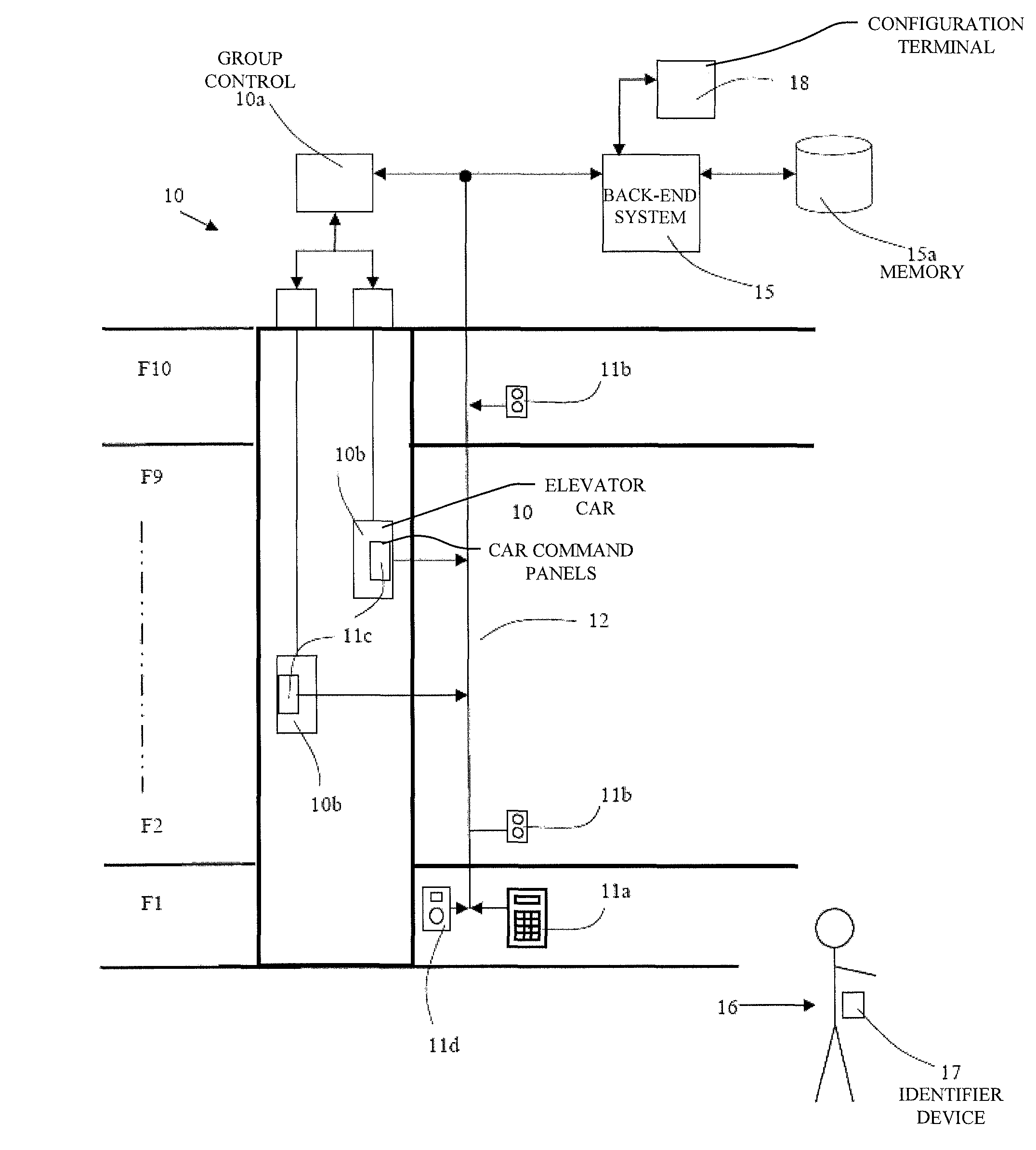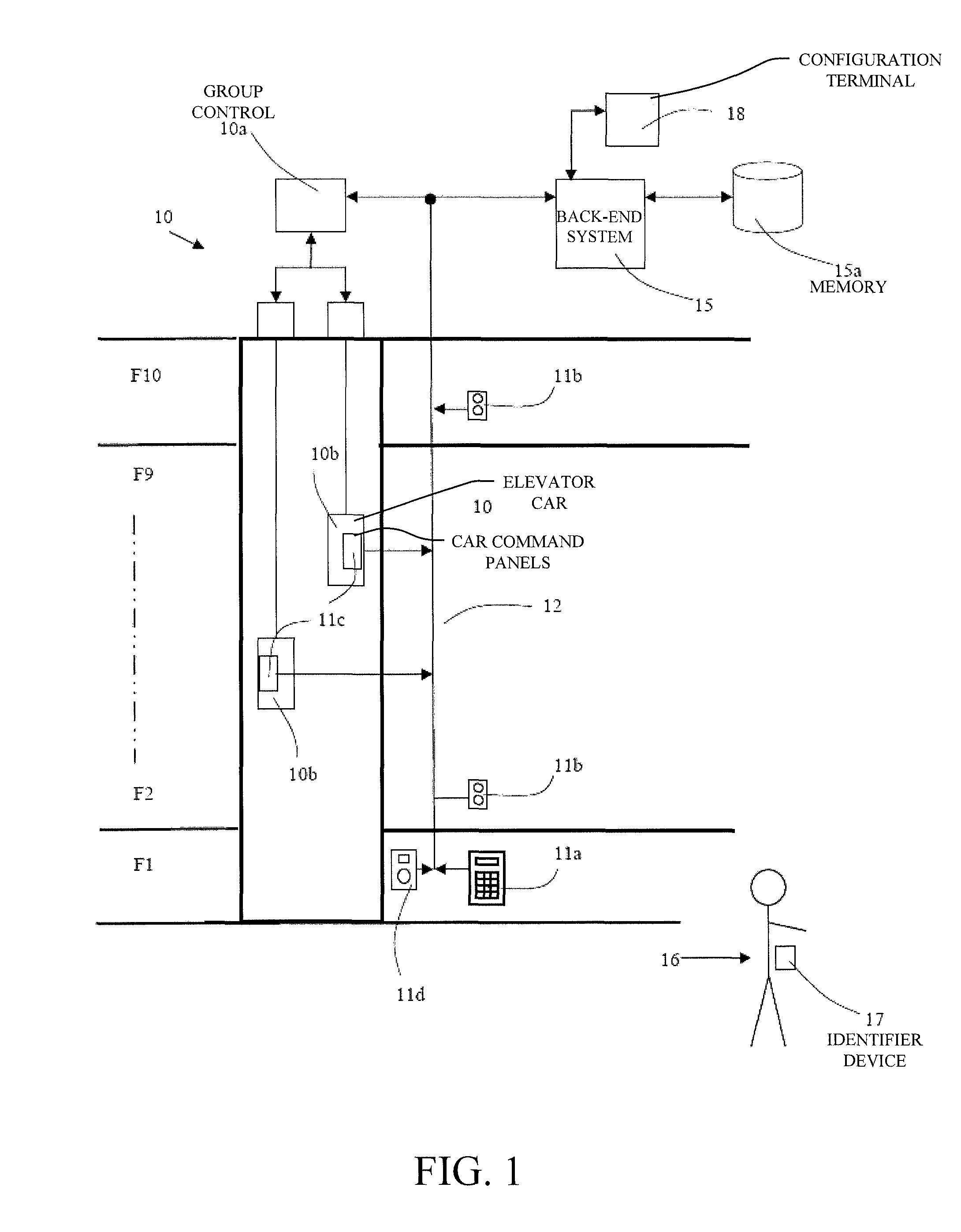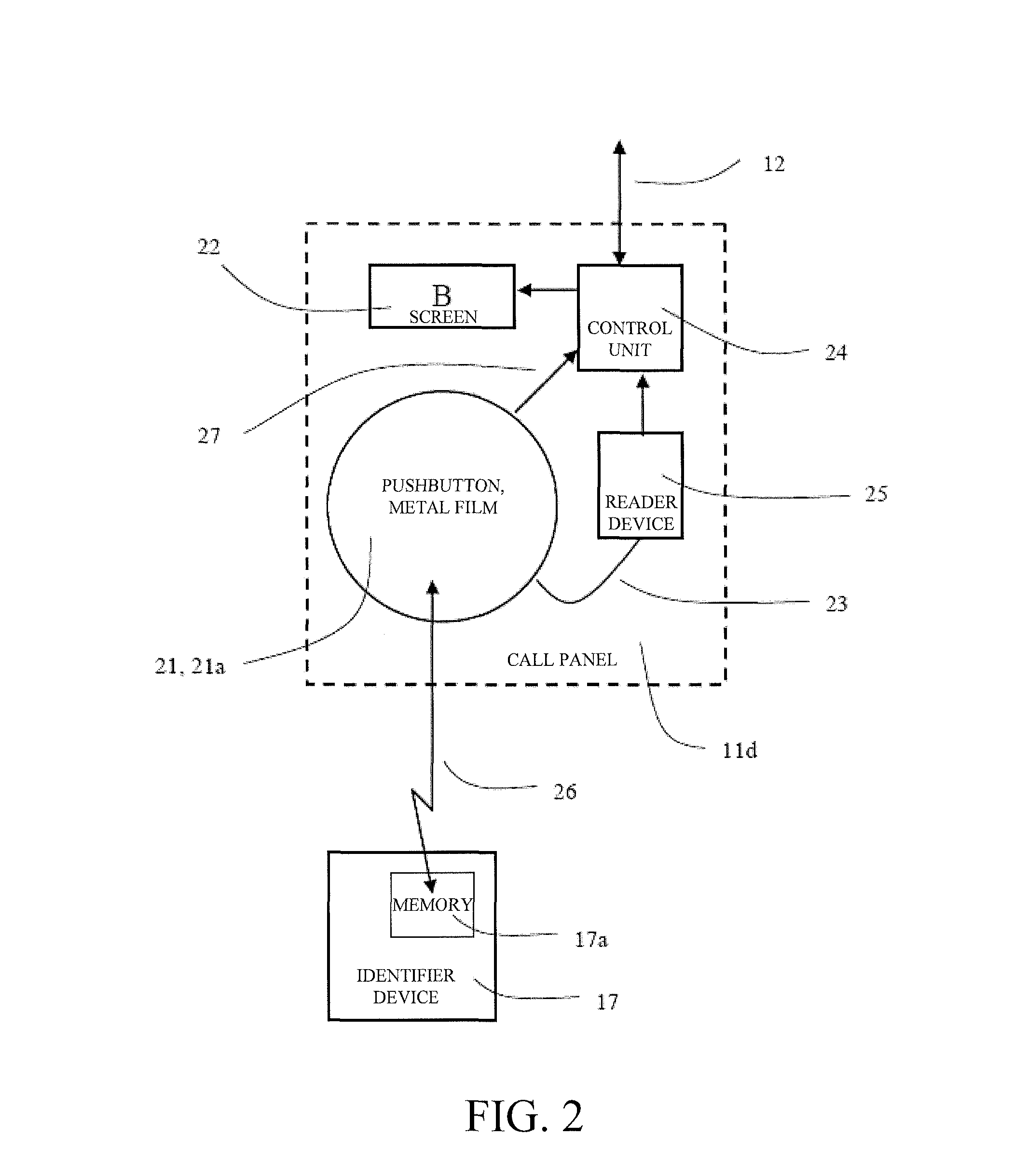Methods and systems for providing service requests to conveyance systems
a technology of service request and conveyancing system, applied in the field of conveyancing systems, can solve the problems of increasing costs, complex and expensive systems based on bio-identification, and generating erroneous elevator calls or other service requests, so as to facilitate and speed up the arrival of passengers, facilitate and simplify user interfaces
- Summary
- Abstract
- Description
- Claims
- Application Information
AI Technical Summary
Benefits of technology
Problems solved by technology
Method used
Image
Examples
Embodiment Construction
[0021]FIG. 1 presents one system according to the invention in a building, wherein an elevator group 10 serves the floors F1-F10 of the building. The elevator group comprises up / call pushbuttons 11b on the floors F2-F10 for calling an elevator car 10b to a call floor, a destination call panel 11a for giving destination calls in the entrance lobby F1, and car command panels 11c for giving car commands in the elevator cars 10b. In addition, the elevator system comprises a call panel 11d, the operation of which is described in more detail later. The call panels 11 (11a-11d) that function as the user interfaces of an elevator group are connected to a local network 12, via which the back-end system 15, the group control 10a and the call panels11 can transmit data to each other. The local network 12 can be any data transfer network whatsoever that is suited to the purpose, e.g. a CAN-bus (Controller Area Network). The devices to be connected to the local network 12 can be arranged to comm...
PUM
 Login to View More
Login to View More Abstract
Description
Claims
Application Information
 Login to View More
Login to View More - R&D
- Intellectual Property
- Life Sciences
- Materials
- Tech Scout
- Unparalleled Data Quality
- Higher Quality Content
- 60% Fewer Hallucinations
Browse by: Latest US Patents, China's latest patents, Technical Efficacy Thesaurus, Application Domain, Technology Topic, Popular Technical Reports.
© 2025 PatSnap. All rights reserved.Legal|Privacy policy|Modern Slavery Act Transparency Statement|Sitemap|About US| Contact US: help@patsnap.com



